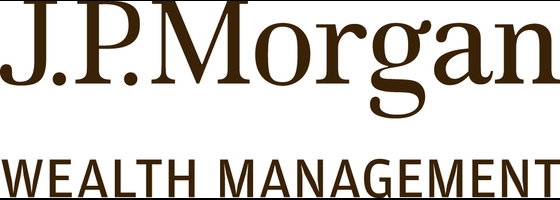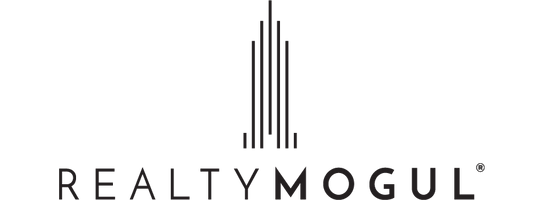Our evaluations and opinions are not influenced by our advertising relationships, but we may earn a commission from our partners’ links. This content is created independently from TIME’s editorial staff. Learn more about it.
With retirement plan details routinely available online, checking your active 401(k) balance is easy. But do you know how to check your 401(k) balance if it’s in an old plan from a former employer?
That can be more challenging than it may seem. If it’s an employer you left within the last few months, you likely still have access to the online platform. You may still be receiving statements in the mail. Things become more problematic if you hold a plan with an employer you haven’t worked for in several years.
Over time, you can easily lose track of the plan website and your passwords. And if you have moved, you may no longer receive paper statements.

Playbook
Playbook
Free trial: 7 days
Essential: $19/month (best for assets under $29K)
Plus: $59/month (best for assets over $29K)
How to check your 401(k) balance with your current employer
Checking a 401(k) balance with your current employer should be easy if you have set up access to the plan’s online portal. Once there, you can check your plan balance and other components of your plan. And if need be, you can make adjustments along the way.
You should check the following plan provisions regularly:
- Your account balance, including your vested balance.
- Portfolio allocations between stocks and bonds.
- Available investment options, as this may change periodically.
- Your contribution and your employer’s matching contribution, if any.
- Any account fees charged.
You should check this information quarterly or at least once a year. It will give you an opportunity to ensure your plan is in line with your retirement goals and allow you to make any changes needed to close the gap.
But how can you check your 401(k) balance from an old plan? Here are the steps you should take:
Four ways to find an old 401(k) plan
1. Find paperwork related to your old plan(s)
You may have documents related to one or more old 401(k) plans filed away somewhere where you store important papers.
A single document can provide sufficient information for you to regain access to your old plan. This can include a monthly or quarterly statement, original plan paperwork, plan correspondence, or even a pay stub that shows the name of the plan trustee.
Once you have the trustee's name, you can contact them directly to access your account.
2. Reach out to your former employer
If you don’t have any documents related to your old plan, reach out to previous employers. Employers seldom change plan trustees, so it’s likely to be the same as it was when you actively participated in the plan.
In some cases, you’ll be able to get all the information you need from the human resources department. If not, your former employer may be able to direct you to the plan administrator or trustee.
3. Reach out to the plan trustee (if you remember who it is)
If you remember the plan trustee of a previous plan, that may be enough to gain access to your account. For example, if you remember that you have a plan with Vanguard, you can contact the company directly and find out the process to locate an old plan in your name.
The trustee can help you access the account if you can provide certain information, such as your full name, your Social Security, and the name of the employer sponsoring the plan.
4. Search U.S. government databases
Locating an old 401(k) plan can become even harder if the employer sponsoring the plan is taken over by another company, merges, or if the plan is transferred from one trustee to another. For a particularly old plan, the trail may go cold.
Even so, you’ll still have one more option—to check with government databases.
Start with the Pension Benefit Guaranty Corporation (PBGC), a U.S. government-chartered organization created to insure the funds held in employer-sponsored retirement plans. The PBGC provides a guide to help you locate a lost pension plan. It may even have direct information on a failed plan on which it had to pay a claim.
The PBGC also covers defined benefit plans, which are pension plans that provide a pre-established payout during retirement, rather than defined contribution plans like 401(k)s. However, the process of locating a defined contribution plan should be similar to finding a defined benefit plan
Another online source is the National Registry of Unclaimed Retirement Benefits. You can use this free service if you haven’t communicated with your former plan in several years. Start your search by going to the “find your funds” page (you must provide your Social Security number to conduct the search). The registry will help you locate the plan; however, it will be up to you to contact the previous employer or plan trustee based on the information uncovered.
What to do after you locate your 401(k) balance
Once you regain access to your old 401(k) plan, you’ll need to take steps to protect that access going forward. Be sure to store your access credentials somewhere safe and log in regularly to check your account.
Regaining access also gives you an opportunity to decide if you want to continue to hold funds in an old plan.
Consider whether you are satisfied with the plan's performance since you lost track of it. If you are, make sure that your previous employer and plan trustee are ok with you keeping the account active. Also, review your portfolio allocations to ensure they are consistent with your current targets. If they aren’t, adjust to rebalance them to their proper percentages.
You should also closely examine any expenses connected with the old account. If the fees are high, consider transferring the funds from the old plan into either your 401(k) plan with your current employer or an IRA account. Either strategy will enable you to retain the value of the plan and avoid incurring income tax costs for the transfer.
Before starting the process, check and see if your current employer will allow you to roll over the old plan into your new one. If they do, and you’re happy with your current 401(k), that may be the best course of action.
IRA rollover of the old 401(k)
If you can’t roll over the old balance into your current 401(k) or are not entirely satisfied with the current plan, you can always do an IRA rollover from the old plan. Fortunately, there are plenty of options with IRA rollovers.
Those options include:
Self-directed investing. If you prefer to manage your own investments, you can roll the old 401(k) plan balance into an IRA that you can administer yourself. For example, by moving the balance into a J.P. Morgan Self-Directed Investing account, you can take advantage of unlimited commission-free trades on individual stocks, options, mutual funds, and exchange-traded funds (ETFs).

J.P. Morgan Self Directed Investing
J.P. Morgan Self Directed Investing
$0 stock & ETF trades.
$0.65/contract options trades.
$0 mutual funds trades.
Personal investment advisors. If you prefer, you can move your funds into an account managed by a personal investment advisor. An advisor will get to know you, your investment goals, your time horizon, and your risk tolerance, then design and manage your portfolio for you.
This option is more suitable if you have a large account balance. For example, Empower requires a minimum balance of $100,000, while J.P. Morgan Personal Advisors has a $25,000 minimum.

Empower
Empower
Real estate investing. If you’re uncomfortable with stock investing, you can roll your 401(k) balance into a dedicated real estate investment IRA. RealtyMogul enables you to invest in individual property deals and private real estate investment trusts (REITs). You can invest retirement money with RealtyMogul through a special IRA known as a Self-Directed IRA (SDIRA), which the company will help you set up.

RealtyMogul
RealtyMogul
Bonus option: You can take advantage of a “financial concierge” through a company known as Beagle. Beagle can help you find an old 401(k) plan, analyze the plan’s fees, and complete a rollover into an IRA account.
TIME Stamped: Why you need to locate your old 401(k) balances now
As time passes, you can potentially lose retirement money that is rightfully yours. Therefore, the time to locate and reclaim those funds is now.
You have multiple options, both to locate an old plan and retain or convert it into a new one better suited to your needs. But act now, as the more time passes, the more difficult everything can become.
Frequently asked questions (FAQs)
Can I find my 401(k) with my Social Security number?
You’ll almost certainly need to provide your Social Security number once you locate the trustee that holds your plan. You’ll also need it if you want to search out a plan on the National Registry of Unclaimed Retirement Benefits.
When dealing with the plan trustee, your Social Security number will likely be only a starting point. The trustee will request other information to confirm you are who you say you are.
What are the fees associated with checking my 401(k)?
You shouldn’t be required to pay a fee for checking a current or old 401(k) plan. However, it’s possible that a plan trustee will charge a research fee if they cannot immediately verify the existence of your account.
How do I access my 401(k) after leaving my job?
You should be able to access your plan online anytime you like. But this can become problematic if it’s an old plan you no longer have information about. In that case, follow the steps outlined in this article to recover access.
How long can a company hold your 401(k) after you leave?
Theoretically, a company can hold your 401(k) indefinitely, or at least until you claim the funds. However, according to the National Registry of Unclaimed Retirement Benefits website, there are a couple of exceptions:
- If the account balance is less than $5,000.
- If the employer terminates the plan.
In these cases, the employer can transfer the funds to a special type of IRA account known as an Automatic Rollover IRA or a Missing Participant IRA.
The information presented here is created independently from the TIME editorial staff. To learn more, see our About page.

